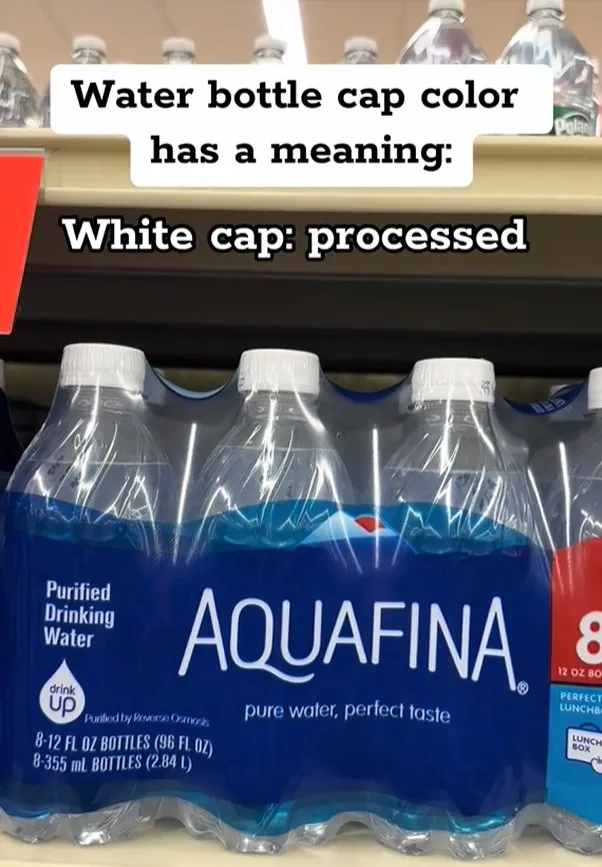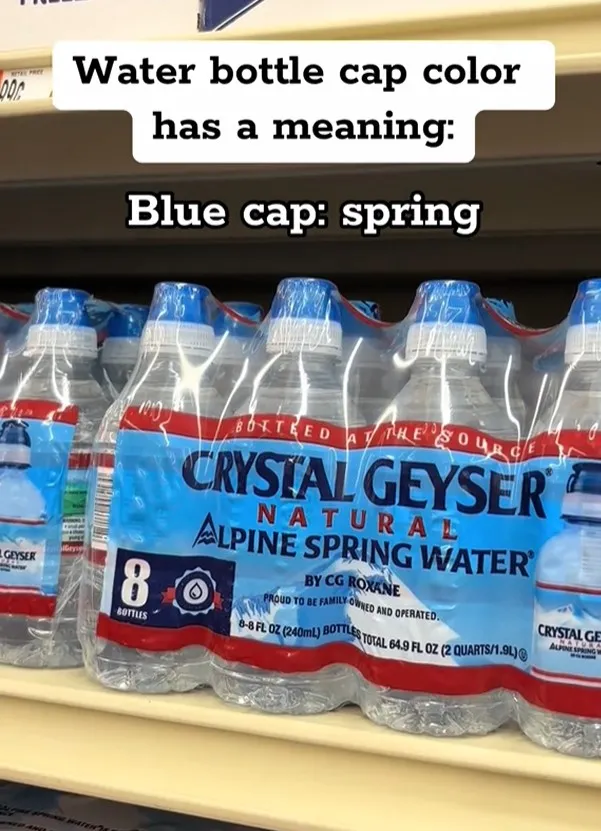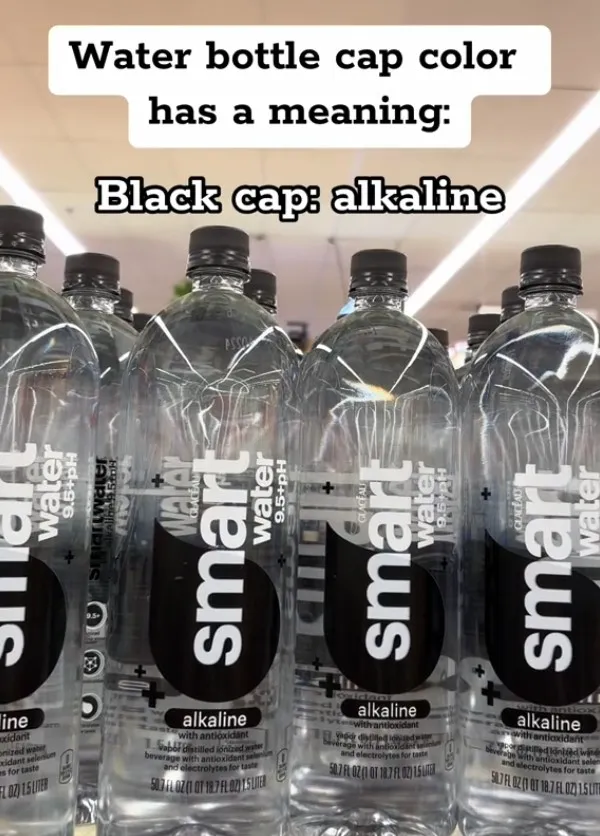Manufacturers use colored bottle caps to help consumers quickly identify products and provide important information about the beverages.
In recent times, many people have started to realize the clever reason behind why bottle caps come in different colors.
When we open a bottle of water, we often don’t pay much attention to the color of the cap.
However, in reality, each color of a water bottle cap carries its own meaning.

Why do manufacturers design bottle caps in different colors?
A TikTok video by user @sasha.mints has gained popularity for sharing that a white cap signifies processed water.
In contrast, a green cap indicates that flavor has been added to the water.
A blue cap signifies “Spring” water, and a black cap indicates that the drink contains alkaline.

A quick Google search confirms this story.
It is well-documented that bottles are color-coded, with white being the standard, or “purified” drinking water.
Red caps can also signify sparkling or carbonated water.
Bottle caps come in various colors, and while they may seem purely decorative, they actually help in organizing and identifying different types of beverages.
Use color coding to differentiate products.
Many manufacturers use color coding as a way to distinguish between various products.
This system makes it easier for consumers to recognize what they are buying, even when they are in a hurry or looking at a crowded shelf.

Benefits of color coding for retailers
The color system is also beneficial for retailers.
Store employees can quickly sort and restock drinks based on cap colors.
If a delivery arrives with cases of drinks, staff can easily identify where each item should go just by looking at the cap colors.
This saves time and ensures that shelves remain organized for customers.

Bottle caps colors can indicate specific beverage features.
In addition to helping with identification, the colors of bottle caps can also indicate specific features of the beverage inside.
Moreover, this color-coding system can enhance safety.
In some cases, it can alert consumers to important details about the contents of a drink.
Interestingly, the color coding of bottle caps is not universal.
Different brands may use different colors to signify the same types of beverages.
This inconsistency can sometimes lead to confusion.

However, the general idea of using colors for identification remains a common practice across many brands.
The concept of color coding is not limited to bottle caps alone.
Other packaging, such as food containers and even cleaning supplies, often use similar strategies to convey information.
For example, many food brands use colors to indicate flavor variations or dietary features.
This shows that the principle of using color for quick identification is widely adopted in various industries.